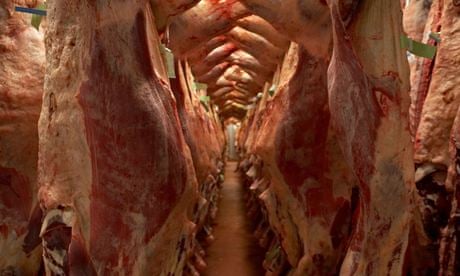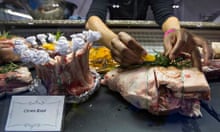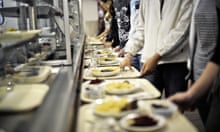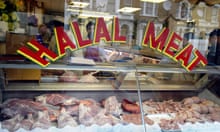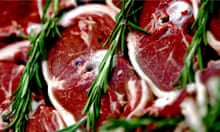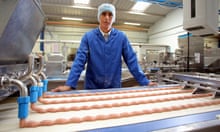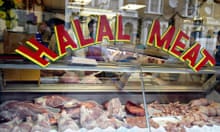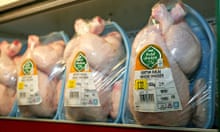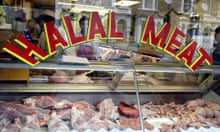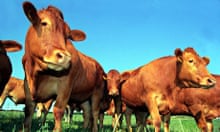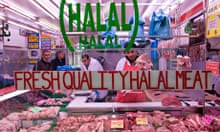The debate over when meat is halal and whether it should be clearly labelled has been put back on the agenda by vets and animal welfare campaigners who want all animals slaughtered for food to be stunned before killing.
The Arabic word halal means permissible, and the rules of slaughter are based on Islamic law. The animal has to be alive and healthy, a Muslim has to perform the slaughter in the appropriate ritual manner, and the animal's throat must be cut by a sharp knife severing the carotid artery, jugular vein and windpipe in a single swipe. Blood must be drained out of the carcass.
About 40m cattle, sheep, pigs and calves and 900m poultry birds are killed in British abattoirs each year, according to a Food Standards Agency (FSA) report two years ago, and one estimate has suggested that 114m of these animals, including poultry, are killed using the halal method. The value of the market could be £2bn a year or more.
But contrary to what many assume, most animals killed by halal methods are stunned before slaughter. FSA estimates suggest that 88% of animals in the UK killed by halal methods were stunned beforehand in a way that many Muslims find religiously acceptable.
In many sheep and lambs this is by electronic stunning to the head or in poultry via a water bath electrified with enough power to make them unconscious but not to kill. Another method of stunning that involves cardiac arrest is not allowed under halal rules.
In non-halal slaughterhouses, stunned animals are shackled and hoisted above the ground where a slaughterman "sticks" them, cutting their throat or inserting a chest stick close to the heart. Cattle and some sheep and pigs are stunned by a bolt through the brain before being killed.
Many poultry are now killed using gas. But they have traditionally been shackled, hung upside down on a production line, moved through electrified water to stun them, then conveyed to a mechanical neck cutter. In halal, however, they are killed by hand.
Muslims who oppose any stunning say their method remains the most humane and point out that a number of stunning methods have been banned as being bad for animal welfare.
The Jewish method of slaughter called shechita cannot involve pre-slaughter stunning at all. Its proponents say the technique learned by practitioners over seven years of training meets the European Union's requirement for stunning in that it brings insensitivity to pain and distress. They argue that a surgically sharp instrument, twice the width of the animal's neck and known as the chalaf, is sufficient because of the speed and expertise with which is applied.
It is estimated that in total, under any method, 3% of cattle, 10% of sheep and goats and 4% of poultry slaughtered in Britain are not pre-stunned, although a proportion are stunned after the cut.
Vets say unstunned cattle take about 20 seconds (but up to 2 minutes) to lose consciousness, sheep six or seven seconds (but up to 20) and poultry seven or eight seconds, but all these times can be far longer.
Some European countries, most recently Denmark, have banned slaughter without pre-stunning. The RSPCA and British Veterinary Association are among the groups calling for an end to slaughter without pre-stunning – a move that would mean an end to religious exemptions from European and UK legislation on this element of slaughtering, and also, say campaigners, an end to unnecessary suffering.
Campaigners are urging the government to introduce clear labelling to say whether meat is slaughtered by halal methods – an issue which the European Union is already studying. Some Muslims warn that there must be an information campaign beforehand and those who are against any stunning question why, if labelling on the halal method is necessary, why is not for animals slaughtered in other ways, by captive-bolt gun, gassing, electrocution, drowning or "mis-stunning".
